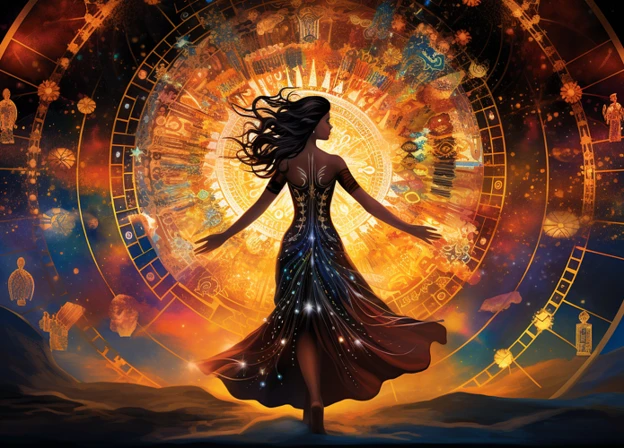Unveiling the Myths and Realities of Zodiac Compatibility – Unlocking the mysteries of love and relationships has always intrigued humanity. One age-old method that has fascinated people for centuries is astrology, particularly zodiac compatibility. Determining the compatibility between two individuals based on their zodiac signs has become a popular way to navigate the complexities of relationships. However, amidst the popularity, numerous misconceptions and myths have emerged. In this article, we will delve deep into the world of astrology to decipher the myths and realities surrounding zodiac compatibility. Prepare to have your preconceived notions challenged as we explore the intriguing world of astrological compatibility.
Contents
- What is Zodiac Compatibility?
- Myths about Zodiac Compatibility
- The Reality of Zodiac Compatibility
- Understanding Astrological Compatibility
- Conclusion
-
Frequently Asked Questions
- 1. Can zodiac compatibility determine the success of a relationship?
- 2. Are certain zodiac signs more compatible than others?
- 3. Can opposites attract in zodiac compatibility?
- 4. Is zodiac compatibility only based on sun signs?
- 5. What is the significance of elements in zodiac compatibility?
- 6. Can you determine zodiac compatibility based on birth dates alone?
- 7. Can zodiac compatibility change over time?
- 8. Can zodiac compatibility help in understanding relationship challenges?
- 9. Can zodiac compatibility determine if a relationship is meant to be?
- 10. Is zodiac compatibility only applicable to romantic relationships?
- References
-
Frequently Asked Questions
- 1. Can two people with opposite zodiac signs have a successful relationship?
- 2. Is it true that certain zodiac signs are incompatible with each other?
- 3. Are there specific zodiac sign pairings that are considered perfect matches?
- 4. Can you determine compatibility solely based on sun signs?
- 5. What is a birth chart and how does it impact compatibility?
- 6. How do the ascendant and moon signs influence compatibility?
- 7. Are there compatibility factors beyond sun signs?
- 8. What are elements and modalities in astrology?
- 9. How do planetary aspects affect compatibility?
- 10. What are synastry and composite charts?
- References
- Read More
What is Zodiac Compatibility?
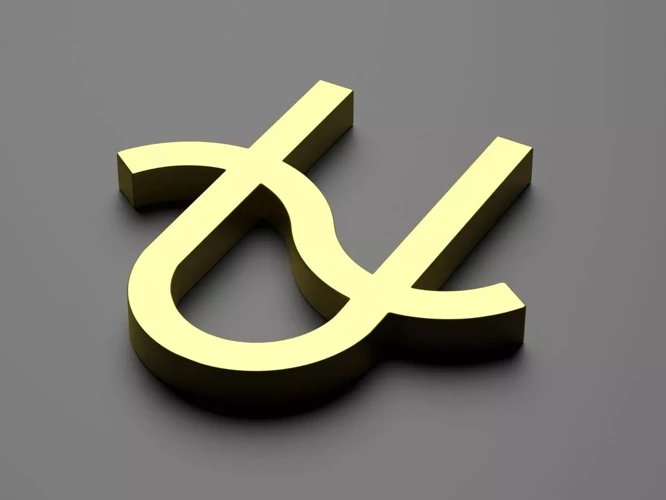
Zodiac compatibility refers to the astrological assessment of the potential harmony and compatibility between two individuals based on their zodiac signs. The zodiac is a circle of twelve signs, each representing different personality traits and characteristics. These signs are based on the position of the sun at the time of an individual’s birth. The concept of zodiac compatibility is rooted in the belief that certain signs are more compatible with each other, while others may clash or experience challenges in a relationship. Astrologers analyze various factors such as the elements, modalities, planetary aspects, and the positions of the sun, moon, and ascendant signs to gauge compatibility. It is important to understand that zodiac compatibility is not a deterministic science and should be approached with an open mind. While it can provide insights and guidance, it should not be the sole basis for making relationship decisions. In the following sections, we will debunk common myths, explore the realities of zodiac compatibility, and provide a deeper understanding of the factors that influence astrological compatibility.
Understanding Zodiac Signs
Understanding Zodiac Signs is essential in comprehending the intricacies of zodiac compatibility. The zodiac consists of twelve signs, each associated with specific dates and represented by various symbols. These signs are determined by the position of the sun at the time of an individual’s birth. Each zodiac sign possesses unique characteristics, traits, and qualities that shape an individual’s personality and behavior. The zodiac signs are categorized into four elements: fire, earth, air, and water.
- Fire Signs: Aries, Leo, Sagittarius – They are passionate, energetic, and impulsive, often exhibiting strong leadership traits.
- Earth Signs: Taurus, Virgo, Capricorn – Grounded, practical, and reliable, they value stability and have a strong sense of responsibility.
- Air Signs: Gemini, Libra, Aquarius – These signs are intellectual, communicative, and social, placing a high value on logic and reasoning.
- Water Signs: Cancer, Scorpio, Pisces – They are sensitive, intuitive, and emotional, often driven by their deep feelings and intuition.
By understanding these zodiac signs and their elemental characteristics, we can begin to explore how they interact and influence compatibility in relationships. It’s important to note that astrology is a complex study, and there are several aspects beyond zodiac signs that come into play when assessing compatibility, such as the influence of the moon and ascendant signs. In the next section, we will delve further into the concept of compatibility and debunk common myths surrounding zodiac compatibility.
The Concept of Compatibility
The concept of compatibility in astrology revolves around the idea that certain zodiac signs are more harmonious with each other, while others may experience challenges or disharmony in a relationship. Compatibility is not solely based on the sun sign but takes into consideration various other factors such as the elements, modalities, planetary aspects, and the positions of the moon and ascendant signs. When two signs are considered compatible, it means that their energies and personalities align in a way that supports a healthy and fulfilling relationship. However, it is important to note that compatibility is not an absolute determinant of the success or failure of a relationship. It is merely a tool to understand the potential dynamics between two individuals. A compatible pairing can still face challenges and require effort and understanding to maintain a thriving relationship. Ultimately, compatibility should not be the sole basis for entering or ending a relationship but rather used as a guide to navigate the complexities of human connections.
Myths about Zodiac Compatibility
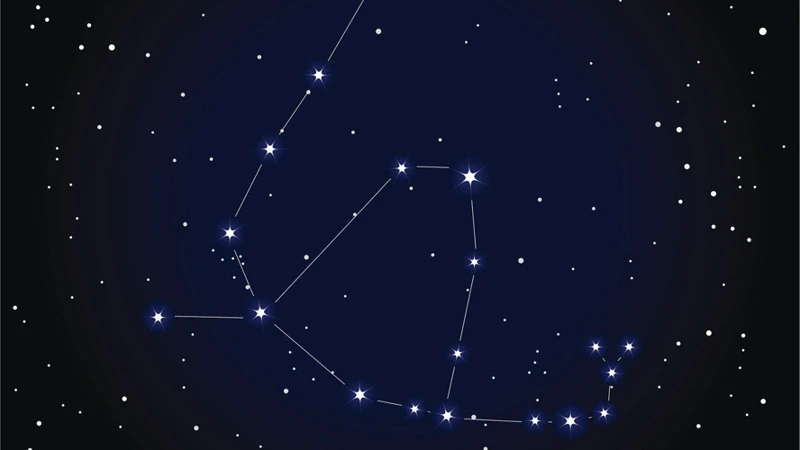
1. Opposites Attract: One common myth surrounding zodiac compatibility is that opposites attract. While it’s true that some individuals may find themselves drawn to those with different personalities, this is not a universal truth. Compatibility is not solely determined by opposing traits but rather the overall balance and harmony between two individuals. Building a successful relationship requires more than just contrasting qualities.
2. Certain Signs are Incompatible: Another misconception is that certain zodiac signs are inherently incompatible. This myth suggests that individuals of specific signs will never be able to form a successful relationship. However, compatibility is not solely based on sun signs. Various factors, such as moon signs, ascendants, and aspects, play significant roles in determining the dynamics between two individuals. It’s important to consider the entire birth chart rather than just sun signs when assessing compatibility.
3. Specific Sign Pairings are Perfect Matches: Many people believe that certain sign pairings are destined to be perfect matches. This notion, however, oversimplifies the complexity of relationships. While certain signs may share natural affinities, other factors in astrology, such as the elements and modalities, also influence compatibility. Each individual is unique, and compatibility cannot be determined solely based on sun sign pairings.
4. Sun Signs Determine Compatibility: One of the most pervasive myths is that sun signs alone determine compatibility. Sun signs are undoubtedly significant, as they represent our core identity and ego expression. However, they do not paint the full picture of compatibility. To assess compatibility accurately, astrologers consider multiple factors, including the positions of other planets, moon signs, and ascending signs. These elements, when analyzed together, provide a more comprehensive understanding of an individual’s compatibility.
By debunking these myths, we can move beyond limiting beliefs and gain a deeper appreciation for the intricacies of zodiac compatibility. It is essential to approach astrology with an open mind, understanding that compatibility is a multifaceted concept that requires a holistic assessment. In the following sections, we will explore the reality of zodiac compatibility and uncover the factors that truly influence astrological compatibility.
1. Opposites Attract
The notion that opposites attract is a common belief when it comes to zodiac compatibility. Many people believe that individuals with contrasting personalities or traits are inherently more compatible with each other. However, in the realm of astrology, this notion may not always hold true. While it’s true that individuals with different zodiac signs may possess complementary qualities, compatibility is not solely based on opposites. Astrologers consider a range of factors, including the elements and modalities of the signs. Each zodiac sign belongs to one of four elements – fire, earth, air, or water – and has either a cardinal, fixed, or mutable modality. These elements and modalities contribute to the overall compatibility between two individuals. For example, fire signs like Aries, Leo, and Sagittarius are often passionate and outgoing, and they tend to be compatible with other fire signs due to the shared energy and enthusiasm. On the other hand, earth signs like Taurus, Virgo, and Capricorn are more grounded and practical, and they may find compatibility with fellow earth signs. It is important to note that while compatibility can be found in both similar and contrasting traits, the success of a relationship depends on various other factors as well. So, while the idea of opposites attracting may sound intriguing, astrology suggests that a harmonious blend of shared values, communication, and understanding is essential for a successful relationship.
Please follow this [link](/lucky-numbers-enhance-luck-fortune/) to explore the world of lucky numbers and how they can enhance luck and fortune!
2. Certain Signs are Incompatible
The belief that certain signs are inherently incompatible is a common myth surrounding zodiac compatibility. While it is true that some signs may face more challenges or have different dynamics in a relationship, it does not mean that they are destined to fail. In astrology, compatibility is a complex interplay of various factors beyond just sun signs. Factors such as the positions of the moon, ascendant, and other planetary aspects also play a significant role in determining compatibility. Additionally, individual characteristics, life experiences, and personal growth can greatly influence the dynamics of a relationship, regardless of zodiac signs. It is important to approach compatibility with an open mind and recognize that any relationship can succeed with the right understanding, effort, and communication. It’s essential to consider the unique combination of traits and energies that each person brings to a relationship rather than relying solely on the belief that certain signs are inherently incompatible.
Learn more about the rise of Ophiuchus and its influence on astrology.
3. Specific Sign Pairings are Perfect Matches
One common myth surrounding zodiac compatibility is the belief that specific sign pairings are perfect matches. Many people believe that there are certain combinations of zodiac signs that are destined to have an effortless and harmonious relationship. However, this notion is not entirely accurate. While certain sign pairings may have potential strengths and natural affinities, it is important to remember that compatibility goes beyond just the sun signs. The compatibility between two individuals is influenced by a multitude of factors including their moon signs, ascendant signs, and the overall dynamics of their birth charts. Each person has a unique combination of planetary positions that contribute to their individuality and relationship dynamics. It is misleading to claim that specific sign pairings are universally perfect matches. It is crucial to take into consideration the individual characteristics and compatibility factors rather than solely relying on the sun sign compatibility. In the next section, we will explore the factors beyond sun signs that play a role in astrological compatibility, offering a more comprehensive understanding of this complex topic.
4. Sun Signs Determine Compatibility
4. Sun Signs Determine Compatibility
One of the most common myths surrounding zodiac compatibility is the belief that sun signs alone determine the compatibility between two individuals. While the sun sign is a significant factor in astrology, it is not the sole determinant of compatibility. The sun sign represents one’s core essence and basic personality traits, but it does not encompass the entirety of an individual’s astrological makeup.
To gain a more accurate understanding of compatibility, astrologers consider the entire birth chart. The birth chart is a map of the sky at the exact moment of a person’s birth and includes the positions of the sun, moon, planets, and other celestial bodies. Each of these elements contributes to an individual’s unique astrological profile and can significantly influence compatibility.
For instance, the moon sign, which represents emotions and innermost desires, plays a crucial role in relationships. It governs how individuals express their emotions and connect with others on an emotional level. If two people have compatible moon signs, they may share a deeper emotional bond, even if their sun signs traditionally indicate less compatibility.
It is essential to look beyond just the sun sign when assessing compatibility. By examining the entire birth chart, astrologers can provide a more comprehensive analysis, taking into account the nuances and complexities of each individual’s astrological makeup. Only then can a more accurate evaluation of compatibility be made.
In the next section, we will explore the reality of zodiac compatibility by discussing the process of charting the birth chart and understanding the influence of ascendant and moon signs.
The Reality of Zodiac Compatibility

To understand the reality of zodiac compatibility, we need to go beyond the simplistic view of just comparing sun signs. While sun signs do play a role, they are just a fraction of the picture. A more comprehensive analysis involves charting the birth chart, which takes into account the positions of all the planets at the time of an individual’s birth. The birth chart provides a detailed map of an individual’s personality, strengths, weaknesses, and potential compatibility with others. Key factors that influence compatibility include the positions of the ascendant and moon signs. The ascendant sign, also known as the rising sign, represents a person’s outward behavior and how they present themselves to the world. The moon sign reflects our emotional nature and plays a significant role in relationships. Understanding the influence of these signs can provide deeper insights into compatibility beyond just sun signs.
Additionally, there are compatibility factors beyond the sun signs that come into play. Elements and modalities are important considerations. The four elements – fire, earth, air, and water – represent different temperaments and energies. Signs of the same element tend to have a natural affinity, while signs of complementary elements can create a balance. Modalities, on the other hand, refer to the qualities that signs possess – cardinal, fixed, and mutable. Each modality brings different strengths and challenges to a relationship. Understanding the interplay of elements and modalities can provide a more accurate assessment of compatibility.
Another crucial factor in astrological compatibility is the analysis of planetary aspects. Planetary aspects refer to the angles formed between planets in a birth chart. These aspects can create harmonious or challenging energies between individuals. Positive aspects, such as trines and sextiles, indicate ease and harmony, while negative aspects, such as squares and oppositions, may bring tension and conflict. The analysis of planetary aspects provides valuable insights into the dynamics of a relationship.
For a more in-depth understanding of compatibility, astrologers often utilize synastry and composite charts. Synastry involves comparing the birth charts of two individuals to identify points of connection and areas of potential harmony or conflict. Composite charts, on the other hand, create a combined chart that represents the essence of a relationship as its own entity. By examining these charts, astrologers can gain a more comprehensive understanding of the compatibility between two individuals.
The reality of zodiac compatibility goes beyond the simplistic view of sun sign comparisons. It involves analyzing the birth chart, considering the influence of ascendant and moon signs, understanding elements and modalities, examining planetary aspects, and utilizing synastry and composite charts. While zodiac compatibility can provide valuable insights, it should be seen as a tool for self-reflection and understanding, rather than an absolute determinant of relationship success. Understanding the complexities and nuances of astrological compatibility can help individuals navigate relationships with greater awareness and insight.
[For more exploration of mythical creatures, check out our article on examining mythical creatures in Norse mythology art.](/examining-mythical-creatures-norse-mythology-art/)
1. Charting the Birth Chart
One of the fundamental aspects of understanding astrological compatibility is charting the birth chart of each individual involved in a relationship. A birth chart, also known as a natal chart, is a map of the positions of the planets at the time of a person’s birth. It provides valuable insight into an individual’s personality traits, strengths, weaknesses, and potential compatibility with others. The birth chart takes into account not only the sun sign but also the positions of other celestial bodies such as the moon, ascendant (or rising) sign, and the various planetary placements. These factors paint a more nuanced picture of an individual’s personality and play a crucial role in determining compatibility. By comparing and analyzing the birth charts of two individuals, astrologers can gain deeper insights into their compatibility on emotional, intellectual, and spiritual levels. It is essential to consult with professional astrologers or use reliable software to accurately chart and interpret birth charts, as the process is complex and requires expertise. Next, we will explore the influence of ascendant and moon signs on astrological compatibility.
2. Influence of Ascendant and Moon Signs
The influence of ascendant and moon signs plays a significant role in zodiac compatibility. While the sun sign is the most commonly known and talked about in astrology, the ascendant (also known as the rising sign) and moon signs provide crucial insights into an individual’s personality and emotional needs.
The ascendant sign represents the mask we wear and how we project ourselves to the world. It governs our first impressions and the image we present to others. When determining compatibility, it is essential to consider the compatibility of the ascendant signs. While two people may have compatible sun signs, incompatible ascendant signs might create challenges in their relationship.
Similarly, the moon sign reflects our emotions, instincts, and innermost desires. It represents our emotional core and how we nurture ourselves and others. Understanding the moon sign compatibility is essential to assess if two individuals can meet each other’s emotional needs and support each other on an emotional level.
For instance, if someone’s sun sign is Aries, known for their boldness and assertiveness, but their ascendant or moon sign is Cancer, known for their sensitivity and emotional depth, they may seek partners who can understand and appreciate their emotional nature.
In relationships, it is crucial to consider not only the sun sign but also the ascendant and moon signs to gain a more comprehensive understanding of compatibility. By analyzing these signs, astrologers can provide more accurate insights into the dynamics and potential challenges within a relationship. Understanding the influence of ascendant and moon signs can help individuals navigate relationships with empathy, patience, and a deeper understanding of each other’s emotional needs.
3. Compatibility Factors Beyond Sun Signs
When it comes to zodiac compatibility, it’s important to understand that there are various factors that go beyond just the sun signs. While the sun sign is undoubtedly an essential component in determining compatibility, it is not the sole factor to consider. Other planetary placements, such as the moon sign and the ascendant sign, also play a significant role in shaping an individual’s personality and compatibility.
Moon Sign: The moon sign represents our emotional nature and reflects how we express and experience emotions. This placement influences our instinctual responses and can greatly impact our compatibility with others. Couples with harmonious moon sign placements often have a deeper emotional connection and better understand each other’s emotional needs.
Ascendant Sign: The ascendant sign, also known as the rising sign, influences our outward behavior, appearance, and how we present ourselves to the world. It can affect the initial attraction and compatibility between two individuals. People with compatible ascendant signs may have a natural affinity and find it easier to understand and relate to one another.
Venus and Mars Signs: Venus represents love, while Mars represents passion and desire. The placement of these planets in an individual’s birth chart can shed light on their romantic and sexual compatibility with others. Harmonious Venus and Mars placements often indicate a strong physical and emotional connection between partners.
Aspects: Aspects refer to the angular relationships formed between two planets in a birth chart. Favorable aspects, such as trines and sextiles, can indicate compatibility and ease in communication between individuals. On the other hand, challenging aspects, such as squares and oppositions, may indicate potential areas of conflict or areas that require effort and compromise in a relationship.
By considering these compatibility factors beyond just the sun signs, astrologers can paint a more detailed picture of a couple’s dynamics and potential compatibility. It is important to note that each person’s birth chart is unique, and individual interpretations may vary. It is advisable to consult a professional astrologer for a comprehensive analysis of astrological compatibility.
Understanding Astrological Compatibility

Astrological compatibility involves a deeper understanding of the various factors that influence the harmony between two individuals based on their zodiac signs. To gain a comprehensive understanding of astrological compatibility, it is important to consider elements and modalities, planetary aspects, and the use of synastry and composite charts.
1. Elements and Modalities:
The elements, namely fire, earth, air, and water, play a significant role in astrological compatibility. Each zodiac sign belongs to one of these elements, which reflect fundamental qualities and traits. Compatibility is often found between signs that share the same element. Fire signs (Aries, Leo, and Sagittarius) exhibit passion and enthusiasm, while earth signs (Taurus, Virgo, and Capricorn) are grounded and practical. Air signs (Gemini, Libra, and Aquarius) prioritize intellect and communication, while water signs (Cancer, Scorpio, and Pisces) are intuitive and emotionally sensitive. Additionally, modalities (cardinal, fixed, and mutable) further define how signs interact. Cardinal signs (Aries, Cancer, Libra, and Capricorn) are assertive and dynamic, while fixed signs (Taurus, Leo, Scorpio, and Aquarius) are stable and consistent. Mutable signs (Gemini, Virgo, Sagittarius, and Pisces) are adaptable and versatile. Understanding these elements and modalities can provide valuable insights into compatibility.
2. Planetary Aspects:
Planetary aspects refer to the angles and relationships formed between the planets in two individuals’ birth charts. These aspects can indicate the flow of energy and the dynamics between people. For example, harmonious aspects such as trines and sextiles suggest ease and compatibility, while challenging aspects like squares and oppositions may indicate tension and differences. The specific aspects between the planets can shape the overall compatibility and interactions between individuals.
3. Synastry and Composite Charts:
Synastry involves comparing and analyzing the birth charts of two individuals to determine compatibility. By examining the placements and aspects of the planets in each chart, astrologers can gain insights into the potential strengths and challenges of a relationship. Additionally, composite charts are created by combining the midpoints of each person’s birth chart to create a new chart that reflects the energy of the relationship itself. It provides a unique perspective on the compatibility and dynamics of the partnership.
By understanding these concepts and factors within astrological compatibility, individuals can gain a deeper awareness of the potential dynamics and challenges within their relationships. It is important to remember, however, that astrology provides guidance and insights, but the outcome of any relationship ultimately depends on the individuals involved and their willingness to communicate, understand, and grow together.
1. Elements and Modalities
Elements and modalities are crucial factors to consider when examining zodiac compatibility. The zodiac signs are categorized into four elements: fire, earth, air, and water. Each element represents specific traits and qualities. Fire signs (Aries, Leo, Sagittarius) are passionate, enthusiastic, and lively. Earth signs (Taurus, Virgo, Capricorn) are practical, grounded, and reliable. Air signs (Gemini, Libra, Aquarius) are intellectual, communicative, and sociable. Water signs (Cancer, Scorpio, Pisces) are emotional, intuitive, and sensitive. Compatibility often arises between signs of the same element due to their shared perspective and common values. However, this does not mean that signs from different elements cannot be compatible. Harmonious relationships can occur when there is a balance and understanding of each other’s differences. Modalities, on the other hand, represent the qualities of each zodiac sign according to their position in a season. The three modalities are cardinal, fixed, and mutable. Cardinal signs (Aries, Cancer, Libra, Capricorn) are assertive, proactive, and initiating. Fixed signs (Taurus, Leo, Scorpio, Aquarius) are stable, determined, and resistant to change. Mutable signs (Gemini, Virgo, Sagittarius, Pisces) are adaptable, flexible, and versatile. Compatibility can be enhanced when signs of different modalities work together, complementing each other’s strengths and compensating for weaknesses. By considering both elements and modalities, astrologers gain a deeper understanding of the dynamics and potential compatibility between two individuals based on their zodiac signs alone.
2. Planetary Aspects
Planetary aspects play a crucial role in astrological compatibility. These aspects refer to the angles formed between the planets in two individuals’ birth charts. They provide insight into how the energies of the planets interact and influence the dynamics of a relationship. There are several types of planetary aspects, each with its own significance.
1. Conjunction: A conjunction occurs when two planets are in close proximity to each other in the same zodiac sign. This aspect signifies a strong connection between the energies represented by those planets. It can indicate shared goals, similar values, and a deep understanding between individuals.
2. Opposition: An opposition is formed when two planets are approximately 180 degrees apart. This aspect represents a tension or polarity between the energies of the planets involved. It can indicate a dynamic and challenging relationship, where both individuals need to find a balance and learn from each other’s differences.
3. Trine: A trine occurs when two planets are approximately 120 degrees apart. This aspect signifies harmony and flow between the energies of the planets. It suggests a natural compatibility and ease of communication between individuals, as their energies effortlessly complement each other.
4. Square: A square is formed when two planets are approximately 90 degrees apart. This aspect represents tension, conflicts, and challenges in a relationship. It indicates areas where individuals may clash or have differing viewpoints. However, squares can also bring growth and transformation if individuals learn how to navigate and work through these tensions.
5. Sextile: A sextile occurs when two planets are approximately 60 degrees apart. This aspect signifies opportunities, cooperation, and a supportive connection between individuals. It suggests that individuals can easily collaborate and bring out the best in each other.
Analyzing and interpreting these planetary aspects in a birth chart can provide valuable insights into the dynamics and potential challenges of a relationship. It is important to consider the overall balance of aspects in a chart rather than focusing solely on one aspect. A combination of harmonious and challenging aspects can contribute to a well-rounded and dynamic relationship. Now that we have explored the significance of planetary aspects, let’s move on to understanding the role of synastry and composite charts in astrological compatibility.
3. Synastry and Composite Charts
Synastry and composite charts are two important tools used in astrology to assess compatibility between individuals. Synastry involves comparing and analyzing the birth charts of two individuals to determine the potential strengths and challenges in a relationship. Astrologers examine the aspects, placements, and interactions between the planets in each chart to gain insights into the dynamics between the individuals. This can provide a deeper understanding of how their energies and personalities may interact and harmonize.
On the other hand, composite charts are created by combining the positions of the planets from the birth charts of two individuals to form a single chart. The composite chart represents the relationship itself as a distinct entity. It reveals the shared qualities, challenges, and potential of the partnership, separate from the individual charts. Interpretation of the composite chart can provide valuable insights into the dynamics, purpose, and overall compatibility of the relationship.
Both synastry and composite charts offer a comprehensive view of the relationship beyond the analysis of individual birth charts. They consider the unique dynamics and chemistry between the individuals, taking into account the interplay of their energies and how they combine to create a distinct relationship dynamic. However, it is important to note that while these charts can provide valuable information, they are just one tool in the astrological toolbox. They should be used in conjunction with other factors and should not be the sole basis for determining compatibility.
Synastry and composite charts offer a deeper understanding of the potential dynamics and compatibility between individuals in a relationship. By examining the interactions and energies at play, astrologers can provide insights into the strengths, challenges, and purpose of the partnership. However, it is essential to approach these charts with an open mind and consider them as part of a holistic assessment of compatibility.
Conclusion
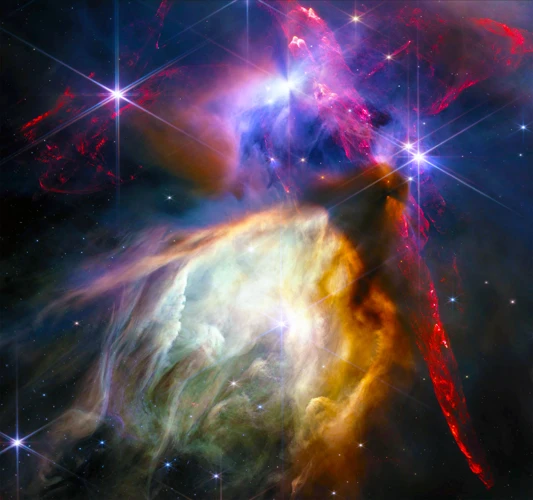
In conclusion, the world of zodiac compatibility is a fascinating realm that has captivated countless individuals seeking to understand the dynamics of their relationships. While popular myths have perpetuated simplistic and rigid notions of compatibility, the reality is far more complex and nuanced. It is important to approach zodiac compatibility with a critical mindset, recognizing that it is just one tool in the quest for understanding relationships. Factors such as birth charts, ascendant, and moon signs, as well as other astrological elements and planetary aspects, play a significant role in determining compatibility. Embracing the multifaceted nature of astrological compatibility allows for a more holistic understanding of relationships. It is important to remember that compatibility is not solely determined by zodiac signs, but rather a combination of various factors that weave together to create the unique tapestry of a relationship. By approaching astrology with an open mind, one can gain deeper insights into themselves and their partners, while also appreciating the beauty and complexity of human connections. So, let us continue to explore the mysteries of the zodiac, unveiling the truths that lie within the constellations and unlocking a deeper understanding of love and compatibility.
Frequently Asked Questions
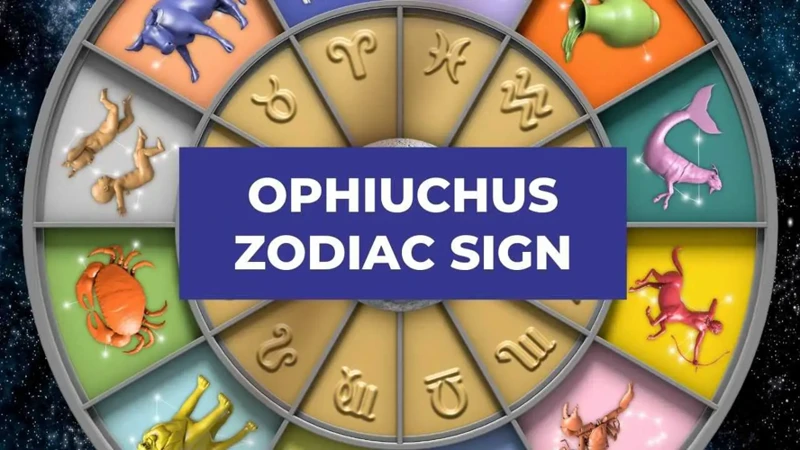
1. Can zodiac compatibility determine the success of a relationship?
Zodiac compatibility can provide insights into the potential dynamics between two individuals, but it does not guarantee the success or failure of a relationship. Many other factors, such as communication, shared values, and personal growth, play a significant role in the outcome of a relationship.
2. Are certain zodiac signs more compatible than others?
While some zodiac signs may have more natural compatibility due to similar traits or elements, compatibility is not solely determined by one’s zodiac sign. Each individual is unique, and other astrological factors need to be considered, such as the positions of the moon and ascendant signs.
3. Can opposites attract in zodiac compatibility?
Yes, opposites can attract in zodiac compatibility. While it is true that individuals with complementary traits can create balance in a relationship, it is essential to have common values and interests to sustain a healthy and harmonious partnership.
4. Is zodiac compatibility only based on sun signs?
No, zodiac compatibility goes beyond sun signs. The positions of the moon sign, ascendant sign, and other planetary aspects all contribute to a more comprehensive assessment of compatibility between two individuals.
5. What is the significance of elements in zodiac compatibility?
The elements (fire, earth, air, and water) in astrology represent different energies and qualities. Signs with compatible elements tend to understand and communicate with each other more easily. However, a lack of element compatibility doesn’t necessarily mean a relationship is doomed.
6. Can you determine zodiac compatibility based on birth dates alone?
No, birth dates alone are not sufficient to determine zodiac compatibility accurately. To get a more accurate assessment, a birth chart, which considers the date, time, and location of birth, needs to be analyzed.
7. Can zodiac compatibility change over time?
Yes, zodiac compatibility can change over time. As individuals grow and evolve, their personality traits and priorities may shift, potentially affecting the dynamics of their relationships.
8. Can zodiac compatibility help in understanding relationship challenges?
Yes, zodiac compatibility can provide insights into the potential challenges that may arise in a relationship. Understanding the astrological aspects can help couples navigate and address these challenges more effectively.
9. Can zodiac compatibility determine if a relationship is meant to be?
While zodiac compatibility can indicate the potential for a harmonious relationship, it does not determine if a relationship is meant to be. Relationships require effort, commitment, and compatibility on various levels to thrive.
10. Is zodiac compatibility only applicable to romantic relationships?
No, zodiac compatibility can be applied to various types of relationships, not just romantic ones. It can offer insights into compatibility with friends, family members, and even colleagues, helping to build better understanding and communication.
References
Frequently Asked Questions

1. Can two people with opposite zodiac signs have a successful relationship?
Yes, two people with opposite zodiac signs can have a successful relationship. Opposites can indeed attract and complement each other in various ways.
2. Is it true that certain zodiac signs are incompatible with each other?
No, it is not true that certain zodiac signs are inherently incompatible. Compatibility is determined by multiple factors beyond just sun signs.
3. Are there specific zodiac sign pairings that are considered perfect matches?
No, there are no specific zodiac sign pairings that can be considered universally perfect matches. Compatibility is subjective and depends on individual personalities and circumstances.
4. Can you determine compatibility solely based on sun signs?
No, determining compatibility solely based on sun signs is not accurate. A comprehensive birth chart analysis is necessary to understand the true compatibility between two individuals.
5. What is a birth chart and how does it impact compatibility?
A birth chart is a snapshot of the sky at the time of an individual’s birth. It includes the positions of various celestial bodies and provides insight into a person’s characteristics and tendencies, which can impact compatibility.
6. How do the ascendant and moon signs influence compatibility?
The ascendant and moon signs are significant factors in determining compatibility. The ascendant sign represents the outer personality, while the moon sign represents emotions and inner needs. Both play a crucial role in how individuals relate to each other.
7. Are there compatibility factors beyond sun signs?
Yes, there are several compatibility factors beyond sun signs, including the positions of other planets in the birth chart, the elements and modalities of signs, and planetary aspects between two charts.
8. What are elements and modalities in astrology?
Elements in astrology refer to fire, earth, air, and water, which represent different qualities and characteristics. Modalities, on the other hand, indicate the way signs initiate or respond to situations, categorized as cardinal, fixed, or mutable.
9. How do planetary aspects affect compatibility?
Planetary aspects indicate the relationships between celestial bodies in a birth chart. Harmonious aspects foster compatibility, while challenging aspects may require extra effort and understanding in a relationship.
10. What are synastry and composite charts?
Synastry is the comparison of two birth charts to assess compatibility between two individuals. Composite charts, on the other hand, are calculated by merging the two birth charts into one, symbolizing the essence of the relationship itself.
References
- Signs Of Compatibility In A Relationship
- Astrology: Myths & Facts
- Star Signs: Reveal the Secrets of the Zodiac
